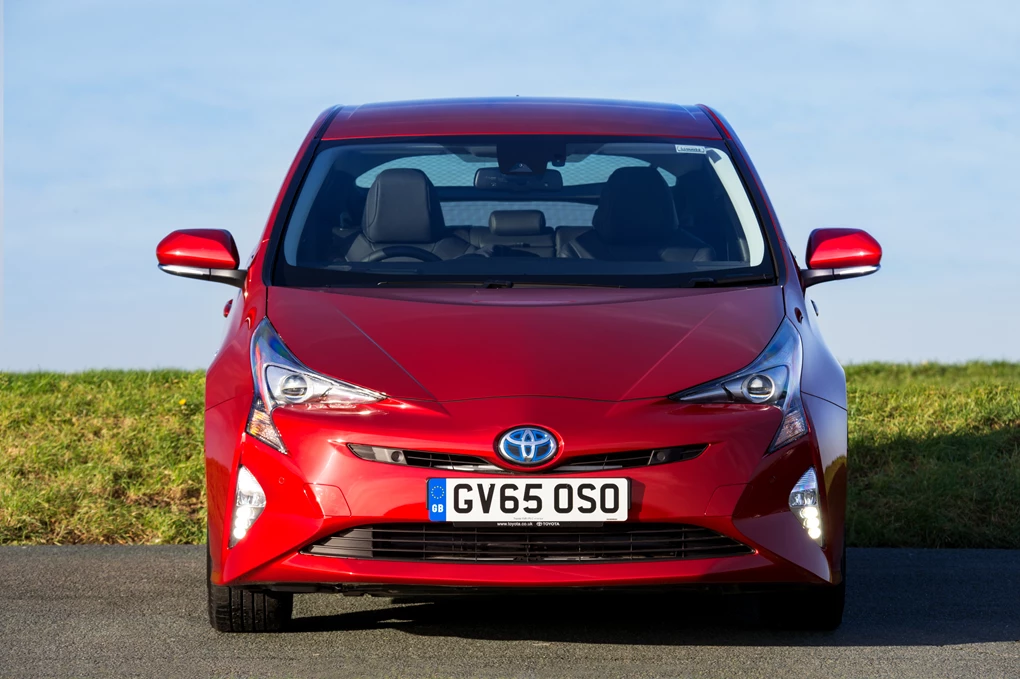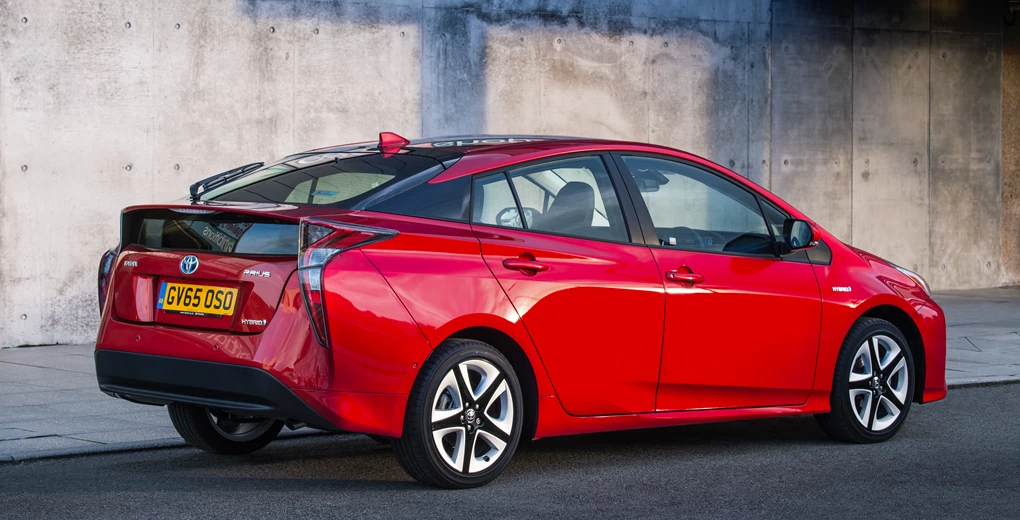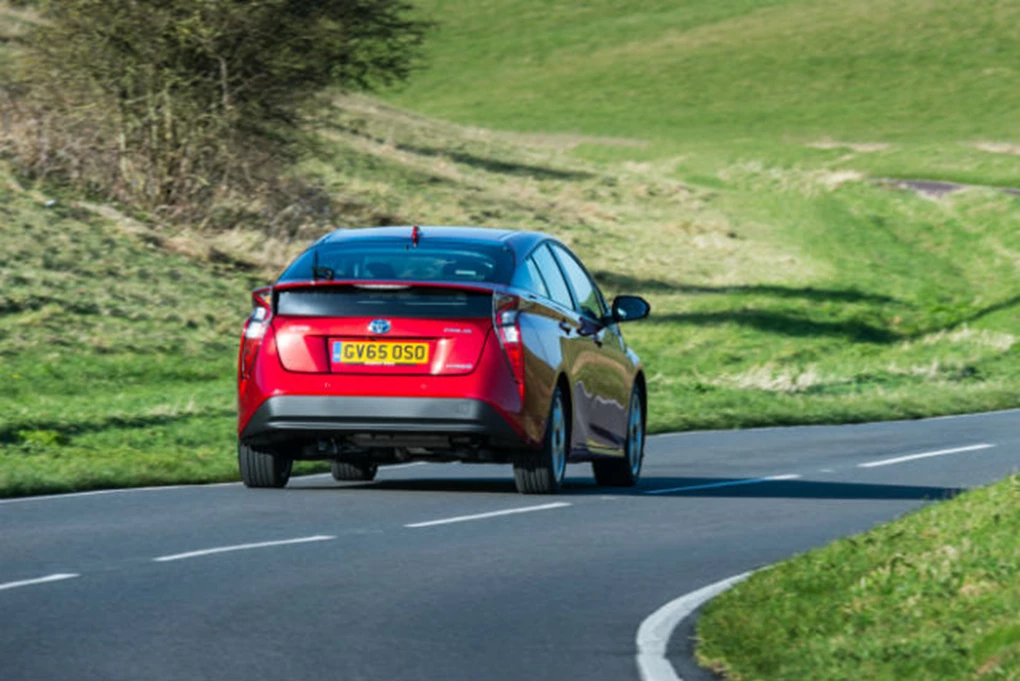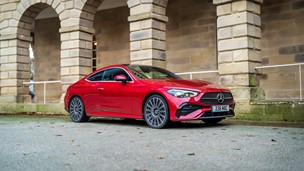The Toyota Prius isn’t the lone ranger it used to be. It used to be that if you wanted a hybrid, the Prius was the go-to car. But now, hybrid popularity is booming, with the likes of petrol-electric versions of the Ford Mondeo, VW Passat and BMW 3 Series all on sale. Even the popularity of Toyota’s Auris hybrid has taken the limelight off the Prius somewhat.
With the added competition, the Prius must be better than ever if it wants to remain a big player in the green car market.
The Prius has always been a bit leftfield in its design and the fourth generation model is no different, with a low front end, slanted headlights and prominent bonnet crease pointing towards the Toyota badge on its nose.
But what about the stuff that really matters in a hybrid – the all-important CO2 and MPG figures?

Performance
Power in the Prius comes from both a naturally-aspirated 1.8-litre petrol engine and an electric motor. Together they produce a total power output of 121bhp and up to 163Nm of torque. It may have a sensible demeanour, but the Prius isn’t slow, getting from zero to 62mph in just 10.4 seconds.
Driving at lower speeds around the city, the Prius will run on pure electric power, with nothing but a faint whistle to accompany the power. Head out of the city and accelerate above the 30mph mark and you will hear the petrol engine kick in.
This powertrain is mated to a CVT automatic gearbox, which is smooth through the gears and will handle pretty much anything you throw at it. It does bounce the revs high under heavy acceleration however, leaving you lingering for a second before the engine roars and the rev gauge shoots up. This is common with automatics however and it is actually quieter than previous Prius models.

Ride and Handling
Drive the Prius around urban areas and you could be in any hatchback, with a comfortable ride and light steering.
Each generation of Prius has edged closer and closer to offering the feel of a conventional car – and the fourth generation model nears closer still. Drive the Prius around urban areas and you could be in any hatchback, with a comfortable ride and light steering. In fact, the Prius’ ride is more comfortable than ever before thanks to a re-tuned suspension, which comes into its own on long motorway journeys. The grabby brakes take some getting used to, but all-round it is very pleasant to drive. Start chucking it around a few bends and you do feel more involved in the driving experience, as it no longer feels like a sluggish people carrier, thanks in part to the driving seat being lowered by 59mm and the centre of gravity lowered by 29mm. It’s still nowhere as sporty as something like the Ford Focus though, with hardly any feel through the steering, making it difficult to detect where the front wheels are pointing mid-bend. You can change the driving mode to Power to sharpen the throttle response, but it’s more advantageous to use Normal or Eco mode and just save fuel. A quick note on the EV mode and power saving: the Prius is designed to save fuel whenever possible to increase efficiency. For example, the passenger side air vents will refrain from blowing air if nobody is sat there, to save energy.

Interior and Equipment
The Toyota Prius was the first mass-produced hybrid vehicle.
The Prius’ interior retains its bulky dual-dashboard with a touchscreen on the fascia as well as a speedometer and vehicle status readout situated on top of the dash. The materials used in the cabin offer a mix of hard wearing plastics and soft-touch cloths and leather. Although the well-equipped entry-level Active trim is the most popular, the flagship Excel trim we tested is for those who want a leg-up in the tech and luxury department, with the Touch 2 with Go Plus system that has sat-nav and online features, leather seats, automatic wipers and a JBL sound system. Space for rear passengers is plentiful, provided you stick to just two in the back as the middle seat can be a bit cramped. When it comes to storage in the boot, more space is now available with 502 litres due to the battery pack being located beneath the rear seats as opposed to the boot floor. Fold the seats down and you get a massive 1,633 litres – which is saloon territory. One of the best bits about the boot though is its wide opening.
Cost
Average fuel economy is quoted at around 90mpg, but realistically expect between 70 to 80mpg.
With the 17-inch alloys fitted, our Prius emitted 76g/km of CO2 though 70g/km is achievable with the smaller 15-inch wheels. Average fuel economy is quoted at around 90mpg, but realistically expect between 70 to 80mpg. In terms of competitiveness, the Prius is still up there as one of the best, certainly ahead of saloon hybrids on sale. You’ll pay a premium for its efficiency though, ultimately paying as much as you would for a saloon than a hatchback, with prices starting from £23,000 – or closer to £28,000 if you go for the Excel model.
Our Verdict
The Prius stays true to what has made it such a successful model over the years, with remarkable efficiency, practicality and polarizing looks. It’s still no sports car to drive, which should come as no surprise, but Toyota has made noticeable improvements to its handling and ride, making it more agreeable than ever. You’ll pay a premium for the Prius, but you get a lot of car for it.





